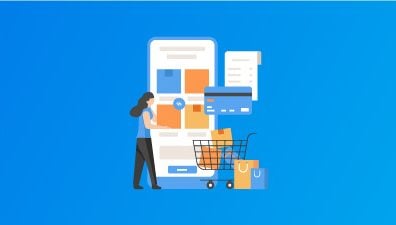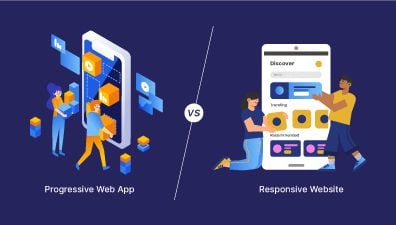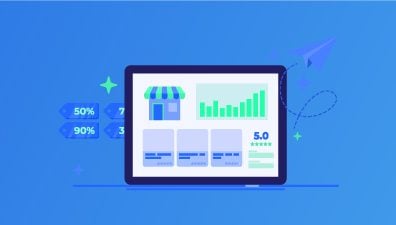Monolithic eCommerce architecture has always held the dominant position in the industry. However, as the market is getting more and more crowded, B2B retailers must find a way to distinguish themselves and stand out. The headless approach rises as a new trend for B2B businesses to go beyond the traditional limits of a storefront and receive a fully customizable solution tailored to their needs. This article will delve into the world of Headless Commerce B2B to investigate its power and how it can help B2B companies thrive in the eCommerce red ocean. Let’s begin!
Table of Contents
- What is Headless Commerce B2B
- Benefits of Headless Commerce for B2B
- Challenges of Headless Commerce for B2B
- When Headless Commerce Is Right for Your B2B Businesses
- What You Need to Implement Headless Commerce B2B
- How to Implement a Headless Commerce B2B strategy
- Headless Commerce B2B Use Cases
- The Best B2B Headless Platforms
What is Headless Commerce B2B
Firstly, let’s break into what is Headless Commerce. The word Headless refers to the separation of the head (front-end) from the body (back-end), allowing them to function independently. This structure is in direct opposition to traditional commerce, where the head and the body are connected. Headless architecture enables businesses to modify the front-end without disrupting the back-end processes, allowing for limitless scalability.
B2B Commerce, or Business-to-Business Commerce, involves transactions and interactions between businesses rather than between a company and individual consumers (B2C). B2B transactions tend to be more complex, with long sales cycles, involving bulk orders, negotiated pricing, and intricate supply chain interactions. Accordingly, the B2B Commerce landscape requires platforms that are equipped to handle these complexities while providing efficiency, accuracy, and personalization.
As the digital age evolved, B2B Commerce has expanded far beyond traditional boundaries. The transactions between businesses are no longer limited to face-to-face meetings. Businesses can now place orders, sell, and purchase, all through online channels. This sparks the entrance of Headless Commerce B2B.

So, what is Headless Commerce B2B?
Headless Commerce B2B is the combination of the flexibility of Headless architecture with the complexity and specific requirements of B2B transactions. By utilizing the decoupled structure and API-first approach, B2B businesses receive a highly adaptable platform to create tailored user experiences for their clients, ensuring that interfaces cater to each client’s unique requirements.
Headless Commerce power comes from the application of API, which works as the bridge for data exchange and functionality access between the front-end and back-end. This architecture enables B2B retailers to make updates or any customization to the presentation layer while preserving a single source of content and data in the back-end.
In essence, B2B Headless Commerce provides businesses with the freedom to design their online storefront with any technology or framework without limitations imposed by the back-end systems. As a result, businesses are able to deliver tailored and personalized content to different customers on any platform. This agility of Headless Commerce aligns well with the ever-evolving B2B landscape, where businesses need to adapt quickly to market shifts, technological advancements, and changing customer preferences.
Benefits of Headless Commerce for B2B
As we delve deeper into the power of this newfound innovative approach, we will continue to explore the prominent benefits of Headless Commerce for B2B businesses.
Flexibility and agility
Market dynamics in the B2B arena are ever-evolving. Hence, the flexibility and agility of Headless Commerce are appealing benefits for B2B businesses, enabling retailers to adapt swiftly to changes.
The separation of front-end and back-end systems allows for independent development and deployment. As trends emerge and technologies evolve, businesses have the freedom to implement updates or the best-of-breed front-end technologies for a rich user experience while leveraging robust and specialized back-end functionality. This agility allows B2B companies to innovate rapidly, stay ahead of the curve, and tailor their offerings to meet evolving market demands.
Scalability and performance
With the decoupled architecture, Headless Commerce is less of a burden when making adjustments or scalability. Each component can be scaled independently based on specific needs. For instance, when your company’s demand skyrockets, the Headless approach is best equipped to scale and make changes quickly, ensuring that your company can still effectively handle fluctuations in traffic and demand.
The decoupling of frontend and backend components in Headless Commerce also has a direct impact on performance optimization. It allows for the effective distribution of resources, preventing bottlenecks and ensuring smooth operations, even during peak usage periods. Faster loading times and responsive interfaces not only contribute to positive user experiences but also strengthen business credibility, fostering trust and loyalty among your B2B clients.
Omnichannel capabilities
The conventional method is the most effective way to optimize a single-user experience, particularly for desktop and computer devices. However, life is changing rapidly, and consumers are increasingly using multiple devices and channels to make and complete purchases, especially mobile apps. Consequently, eCommerce businesses must modify their content swiftly to accommodate these shifting consumer preferences.
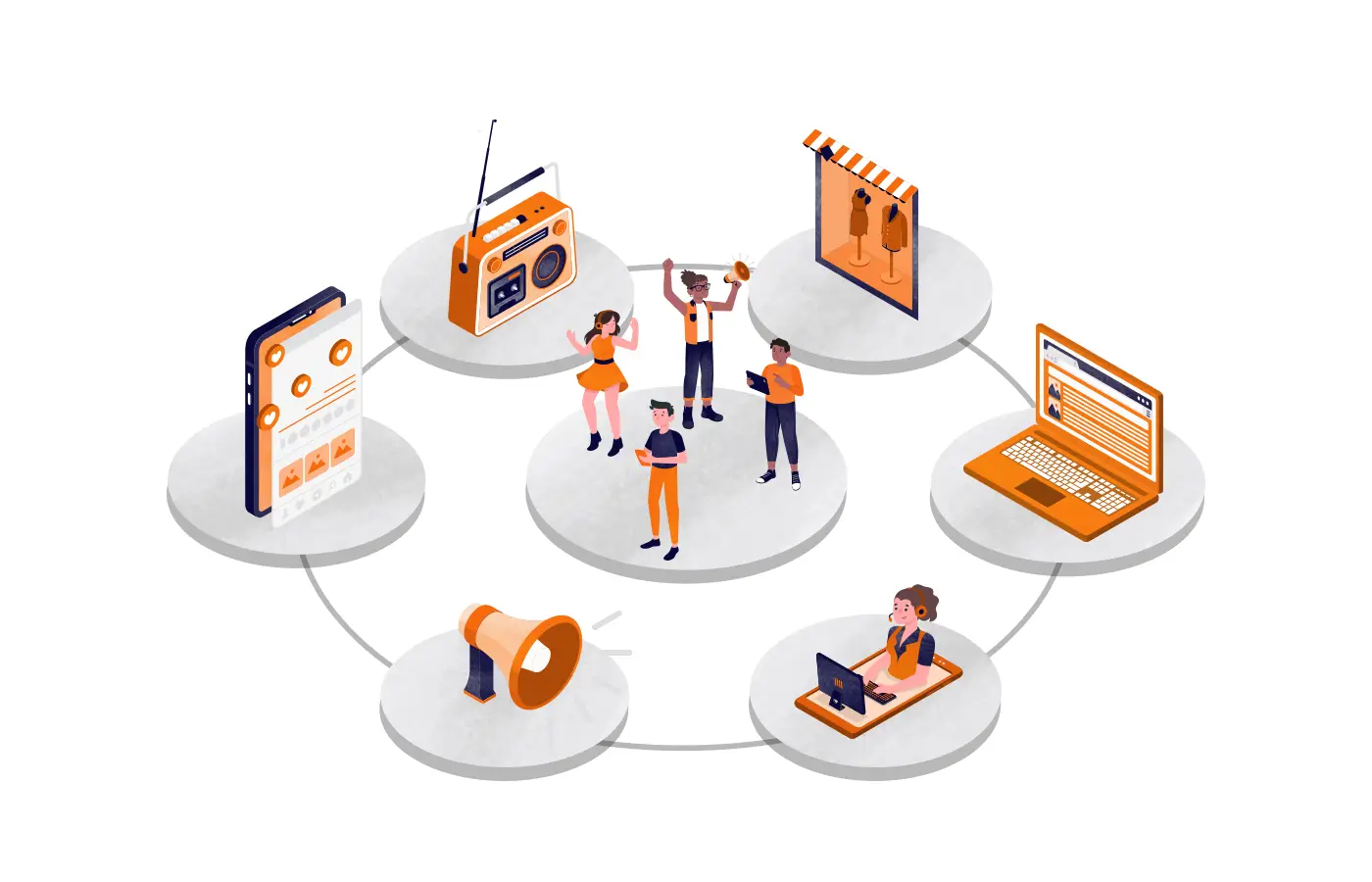
When it comes to unified commerce and multichannel experiences, where flexibility and scalability are paramount, Headless Commerce B2B is an excellent option for businesses. While data is managed within the same back-end system, you can deliver it anywhere to every screen size or device. Headless Commerce architecture provides effortless, authentic, and streamlined buying experiences across multiple channels, therefore strengthening your business’s competitive advantage in this crowded industry.
Better user experience
The end user is the most important stakeholder in B2B Commerce. Headless Commerce, with the aforementioned benefits, all results in delivering the best user experience.
The headless structure’s high flexibility facilitates personalization and customization capabilities. Using data and customer insights, B2B retailers can personalize the user experience at every stage of the customer’s buying journey, from product consideration to checkout. The ability to create personalized experiences increases customer engagement, drives conversions, and fosters an emotional connection to the brand.
With the ability to design customized interfaces and workflows, B2B retailers are able to navigate the platform seamlessly, resulting in streamlined ordering processes, faster load times, quicker decision-making, and ultimately increased client satisfaction. This efficient experience not only strengthens business relationships but also distinguishes businesses in a competitive environment.
Seamless integration
Designed with API-first in mind, Headless Commerce allows B2B retailers to easily connect and communicate their sites with other platforms or any external systems. This is especially important when B2B businesses have to deal with bulk orders with higher precision and requirements from their clients.
Through APIs, Headless architecture simplifies the integration process with third-party software solutions namely CRM, ERP, inventory management, order management, and more. These solutions provide your businesses with additional functionalities and services, expand your eCommerce ecosystem capabilities, and thus enhance operational efficiency.
Future proof
In the rapidly evolving digital landscape, the ability to future-proof operations is paramount. With its limitless scalability, Headless Commerce equips B2B companies with a framework that welcomes any technological advancements.
The modular nature of this approach enables the seamless integration of new front-end technologies and innovations without being constrained by the logic of a traditional business model’s programming. B2B businesses can adapt without the need for costly and time-consuming platform overhauls, positioning themselves for long-term success in an ever-changing market.
Challenges of Headless Commerce for B2B
Complex implementation
The freedom to construct your tailored front-end can sound interesting, however, developing everything from scratch is an intriguing task. It demands expertise in both front-end and back-end technologies as well as API development. The separation of these components requires meticulous planning and coordination to ensure that the two components function harmoniously. This complexity can lead to extended development timelines and the need for specialized skill sets to manage the intricacies of the architecture.
Increased cost and complexity
While Headless Commerce offers unparalleled customization and flexibility, it also requires increased costs and development complexity. The isolation of the front-end and back-end necessitates an additional budget for development and maintenance. Each demands a distinct amount of cost for construction as well as increased effort for further customization as your businesses grow.
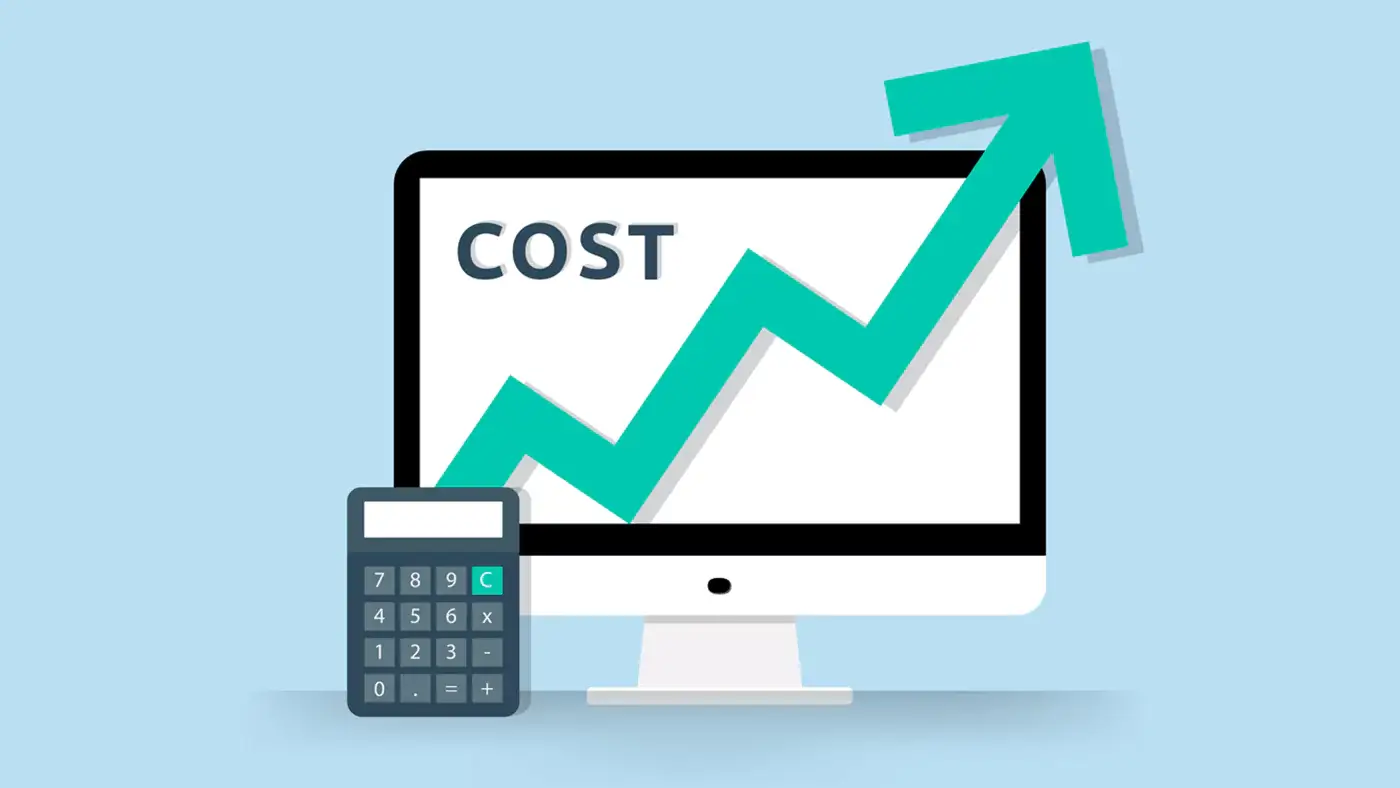
Potential integration complexities and the need for specialized knowledge can increase development expenses. This will be a considerable challenge if your businesses are budget-constrained. Not only that you need to consider financial capability carefully, but you should also allocate your business’s resources, including human capital and specialized expertise. As businesses embrace the benefits of modularization and personalization, they must also weigh these advantages against the potential cost implications.
Resource intensive
With the complexity of the Headless Commerce B2B, building and customizing this system is extremely resource-intensive, both in terms of time and cost. Depending on the level of customization you require, you may need to allocate substantial resources to create the customer experiences you desire on your eCommerce platform. This can result in higher staffing requirements and the need for cross-functional teams. The resource allocation process requires careful planning to balance operational demands and developmental needs.
When Headless Commerce Is Right for Your B2B Businesses
Despite the benefits of this powerful and robust solution, Headless Commerce is not a one-size-fits-all solution for any B2B business. The transition to a Headless Commerce structure within your B2B operations requires considerable investment and resources. Below are some factors that you should carefully consider to make the most out of this platform.
Assess your business’s current capabilities
Before embarking on the journey toward Headless Commerce, determine if your B2B eCommerce business should go Headless. You should first assess the maturity of your business. Headless Commerce may not be the optimal solution for startups or small businesses with limited experience in the field. Established businesses with more mature markets are ideal candidates who already developed a more comprehensive understanding of customers and the market in which they operate. hence, they’ll be able to develop a more effective strategy to deliver a tailored solution to their customers.
Due to the high investment requirements of Headless Commerce, financial capability is another crucial factor to consider. Frequently, small businesses lack the financial resources to cover the increased cost of development and maintenance of this solution, resulting in an additional burden for them. Consequently, you must meticulously estimate all the necessary costs throughout the process and determine whether your business can afford them.
Another capability to consider is your business’s existing technological infrastructure and the expertise of your development teams. Evaluate whether your organization possesses the necessary skills to manage both frontend and backend components separately. If your team lacks experience in this area, it may be worth considering whether to invest in training or bring in external expertise. Additionally, examine the readiness of your current systems to integrate seamlessly into a Headless Commerce architecture. A thorough assessment of your capabilities serves as a foundation for a successful transition and helps mitigate potential implementation challenges.
Product complexity
The complexity of product offering is a crucial factor in maximizing the benefits of Headless Commerce B2B for your organization. If your products have complex pricing structures, customized workflows, and variable configurations, Headless Commerce may be a wise choice. Its ability to deliver individualized user experiences aligns well with the complex needs of B2B transactions. In addition, it allows for seamless integration, allowing you to integrate other solutions such as order management to manage your products and orders more effectively.
In contrast, if your products are straightforward and do not require extensive customization, a traditional eCommerce strategy may suffice to optimize your company’s investment. Assess whether the modularity and potential for customization of Headless Commerce are compatible with your B2B offerings in order to ensure that the investment yields the desired results.
Prioritize adaptability and sustainable growth
After you assess whether your businesses meet all the requirements to best reap the benefits of Headless Commerce, another point to know whether this solution is an excellent choice for your B2B enterprise is your business’s goal.

One of the primary advantages of Headless Commerce is its capacity to facilitate adaptability in a dynamic business landscape. If your B2B operations are subject to rapid changes in market trends, customer expectations, or technological advancements, Headless Commerce is absolutely a perfect answer to respond swiftly to your businesses.
Moreover, if sustainable growth is a priority of your businesses, Headless Commerce enables scalability by allowing independent scaling of frontend and backend components. This scalability accommodates increased transaction volumes, ensuring that your platform will remain responsive and effective as your business grows.
What You Need to Implement Headless Commerce B2B
As you reach here, you’ll have decided to start your Headless Commerce journey. Here are some tips for you to get well-prepared when entering the world of Headless Commerce B2B.
Build a skilled in-house team
The implementation of Headless Commerce necessitates a multifaceted skill set spanning both frontend and backend technologies. As you delve into the world of decoupled architectures, it’s essential to assemble an in-house developer team that can handle the complexities of both aspects. An in-house team gives your organization greater control over the entire process by managing the development of a headless commerce stack in accordance with the organization’s requirements.
Skilled developers, designers, and architects familiar with modern frontend frameworks and API-driven architectures are crucial assets. This team also has a comprehensive understanding of the company, its offerings, and its products, and is typically more adaptable and scalable. Building an in-house team that understands the nuances of both Headless technology and your businesses facilitates more customization and faster development for the project.
Effective resource management
Headless Commerce is a resource-intensive solution. Therefore, the introduction of this solution demands careful resource management to ensure a smooth transition. Resources encompass not only human capital but also financial investments and time allocations. Consider the resources you’ll need for front-end and back-end development and ongoing maintenance. Determine whether your businesses can develop an in-house development team or hire external support for this practice. Also, keep in mind that the development of this solution takes a considerable amount of time, so carefully allocate your time effectively for potential training needs.
Moreover, you should date back to your business’s requirements, the scope of your projects, and the amount of customization you want to receive. This will allow you to prioritize important resources to achieve more effective resource allocation. Striking a balance between investing in skilled personnel, technology infrastructure, and time is pivotal for successful Headless Commerce implementation without overextending your resources.
Find the best-fit solution partner
It is undeniable that building an in-house development team is a convenient and cost-effective solution to embark on the B2B Headless Commerce journey. However, it may be challenging if your organization doesn’t have enough technical expertise and experience. An alternative strategy is to have a Headless solution partner to do all the work for you.
There are hundreds of B2B Headless platforms out there. Partnering with the right one is absolutely important for your successful Headless project. Seek out partners who have a proven track record in Headless Commerce and a deep understanding of B2B operations. Collaborating with experienced partners can help navigate challenges, provide insights into best practices, and streamline the integration of your existing systems into the new architecture. Also, choose a partner who aligns with your business goals, offers scalability, and possesses the expertise to guide you through the complexities of Headless Commerce B2B.
How to Implement a Headless Commerce B2B strategy
Full re-platforming
One approach to implementing a B2B Headless Commerce strategy is to undergo a full re-platforming. This refers to the entire replacement of the existing eCommerce platform with a new Headless Commerce solution. Full re-platforming typically occurs when a store outgrows the capabilities of its eCommerce system or when the existing software is no longer supported.

This strategy may appear to be a significant undertaking, but it provides a blank slate for designing and developing a B2B-specific system that is tailored to your business needs. The process includes the assembling and implementation of an entirely new headless stack all at once, including the front-end, back-end, headless CMS, and more. Accordingly, it requires a thorough assessment of your current systems, data, and integrations to ensure a seamless transition.
Full re-platforming is the best solution if your businesses wish to fully embrace the benefits of Headless Commerce B2B. However, It is important to note that this is an expensive, resource-intensive, and time-consuming approach to headless commerce implementation. Therefore, you should carefully consider your business’s resources and capabilities before deciding to run the full re-platforming to Headless structure.
Frontend-first migration
If you want to keep your existing eCommerce software and find a more budget and less complex way to enjoy the benefits of Headless technology, frontend-first migration is the best solution. This method starts with adding a decoupled front-end to your current eCommerce platform while keeping the back-end systems intact. In this way, you still can leverage the benefits of Headless Commerce while maintaining the stability of your back-end operations.
With the frontend-first approach, this approach comes with less complexity and faster development time. Hence, this method is particularly valuable and more cost-effective for B2B enterprises that prioritize fast page loads and superb customer experience without disrupting the existing system.
One thing to keep in mind about this method is the selection of front-end technologies and APIs that are compatible with your back-end system. In this way, you’ll be able to ensure a smooth integration in the short term and gradually migrate other back-end components to fully adopt the Headless Commerce B2B model in the long run.
Headless Commerce B2B Use Cases
Headless Commerce owns diverse and impactful use cases that touch many parts of B2B businesses, which can benefit both external and internal processes and workflows.
Content Management Systems
The most common use case for Headless Commerce is Content Management Systems (CMS). The Headless technology allows for an exceptional complementation of CMS platforms in the B2B context.
With the decoupled structure, B2B businesses can seamlessly integrate commerce capabilities into their content-rich websites. To illustrate, Headless CMS allows for the dynamic display of product catalogs, pricing, and availability while maintaining a consistent and engaging content experience.
Another point to make is the Headless CMS capabilities in supporting omnichannel selling. It offers seamless content delivery across multiple platforms and devices. This is a significant upgrade for businesses seeking to enhance their eCommerce presence.
Digital Experience Platforms
Digital Experience Platforms are central hubs for managing and delivering content across various digital touchpoints. When combined with Headless Commerce, DXPs enable B2B businesses to manage and deploy their digital presence to provide a better customer experience.
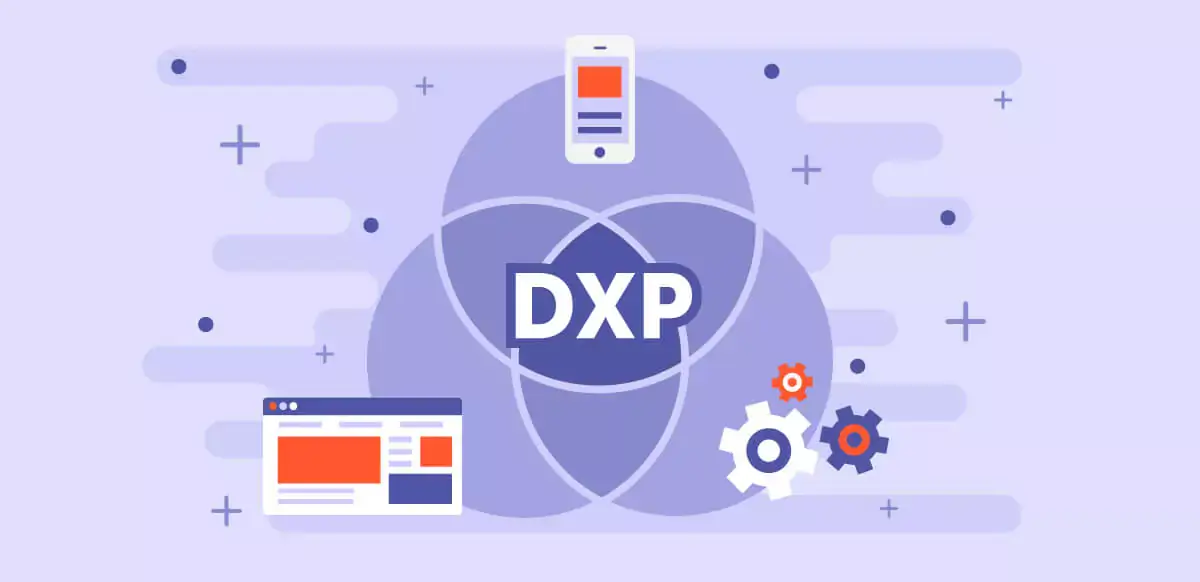
By integrating commerce functionalities into the DXP architecture, companies receive a larger data lake for customer insights, therefore crafting immersive and tailored experiences for their clients. Product recommendations, complex order configuring, and customer accounts management across websites and devices are some actions businesses can take. In this way, you can provide a cohesive and engaging digital journey that fosters your customer loyalty and drives sales.
Progressive Web Apps (PWA)
The rising trend of mCommerce is followed by advanced mobile technologies, which led to the introduction of Progressive Web Apps (PWA). PWA refers to the combination of a website and a mobile app, creating responsive websites that offer app-like experiences.
Headless Commerce is instrumental in powering PWAs for B2B businesses. PWAs leverage Headless Commerce to provide fast and reliable access to product information, order management, and account management. B2B buyers can conveniently browse catalogs, place orders, and access account information through PWAs, enhancing their efficiency and convenience. PWAs also facilitate offline access to critical business functions, ensuring uninterrupted productivity for clients on the go. This combination brings greater flexibility to B2B businesses, making them perfect for deploying and managing rich digital experiences.
The Best B2B Headless Platforms
Magento Commerce
Magento, or Adobe Commerce, is one of the most powerful open-source eCommerce platforms. It comes with great customization that can be tailored to the business’s specific needs. Magento, with its flexibility, has gained popularity among B2B businesses as the preferred choice for establishing an online store.
Magento Commerce includes robust features that are designed to manage the massive traffic and transactions of B2B businesses. It follows a modular design in which systems are separated, permitting front-end experimentation and upgrades without interfering with back-end operations.
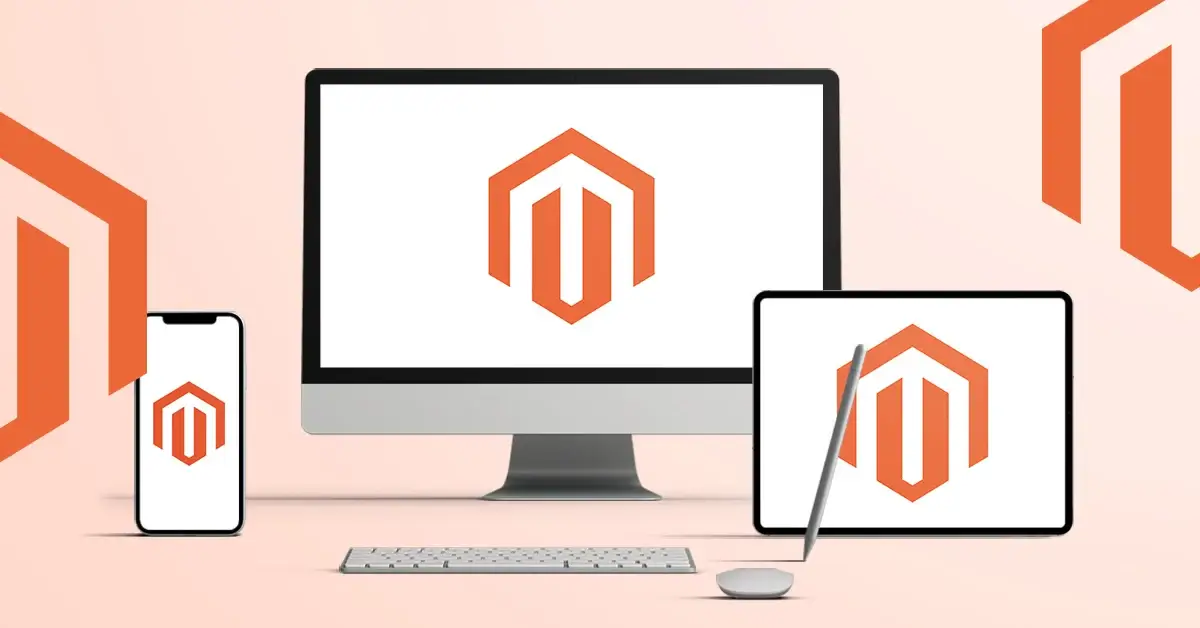
Magento is also renowned for its ability to integrate seamlessly with third-party solutions such as CRM, ERP, POS, and CMS, which enhance the productivity of businesses. Finally, Magento PWA Studio makes it simple to create progressive web apps that maximize Headless’s benefits and provide superior customer experiences.
It is essential to note, however, that Magento is an extremely complex and resource-intensive platform. Before deciding whether or not to use Magento, be sure to conduct a thorough evaluation of your company’s size, resources, and capabilities.
If you already own Magento-based stores and wish to embark on Headless Commerce journey, our Headless Development services for Magento can offer the solutions you need to cover all the hard work.
Shopify Plus
Another famous name in the eCommerce industry is Shopify. Shopify stands out as an easy-to-set-up platform with a user-friendly interface. You can start a Shopify store easily without any cost or the need for technical skills. Contrary to Magento, Shopify offers affordable prices for its development plans, making it a great starting point for B2B eCommerce businesses.

Although the free version of Shopify already provides basic functions to build a complete eCommerce site, Shopify Plus includes more advanced features for further customization of your online stores, including Headless Commerce. It enables business owners to transform any digital screen or device into a sales channel. Shopify also facilitates a mobile-friendly design for your stores, creating more chances to build convenient and streamlined customer experiences through their mobile devices.
However, when compared with Magento, Shopify has fewer customization options, making it an unfavorable solution when it comes to scalability. Therefore, while this is an excellent choice for small enterprises, Shopify is not an optimal option for large businesses to build their Headless Commerce B2B.
BigCommerce
BigCommerce, a leading open SaaS eCommerce platform, is recognized as a strong performer and a worth-to-try solution for B2B businesses. This is an all-in-one platform, that includes all the services you need for eCommerce development, from web hosting, and designed templates, to sophisticated features and tools like package listing, customer segmentation, payment processing, and more.

BigCommerce also offers robust features for Headless Commerce development. It isolates the presentation element from the commerce engine and allows for flexibility in establishing and managing multiple stores simultaneously with diverse front-end solutions from a single dashboard.
BigCommerce is a perfect option if you want to avoid doing all the processes from scratch. The platform provides an extensive selection of ready-to-use headless solutions, including front-end frameworks and Storyblok CMS. This enables you to launch faster and modify more effectively without the burden of lengthy development.
Similar to Shopify, BigCommerce’s customization options are limited. Therefore, it may not be able to satisfy the extremely unique or complex B2B requirements. As an open-source platform, BigCommerce’s pricing structure is extremely complex and may result in increased development costs. You may need to allocate a certain amount of budget for all of your specific requirements can be done with BigCommerce.
Wrapping up
Headless B2B Commerce systems are reshaping the B2B landscape by offering unparalleled flexibility, an enhanced user experience, and a direct path to increased conversions. This may not be a one-size-fits-all solution, but as businesses grow and customer preferences change rapidly, a Headless approach becomes nearly obligatory. This article provides a comprehensive overview of Headless Commerce B2B so that you can gain a better understanding of this emerging term and the benefits it can bring to the expansion of your B2B businesses.
Are you prepared to embrace the future of Headless Commerce B2B and unleash new business opportunities? Contact us for a customized consultation and prompt assistance as you embark on a Headless Commerce success journey.


